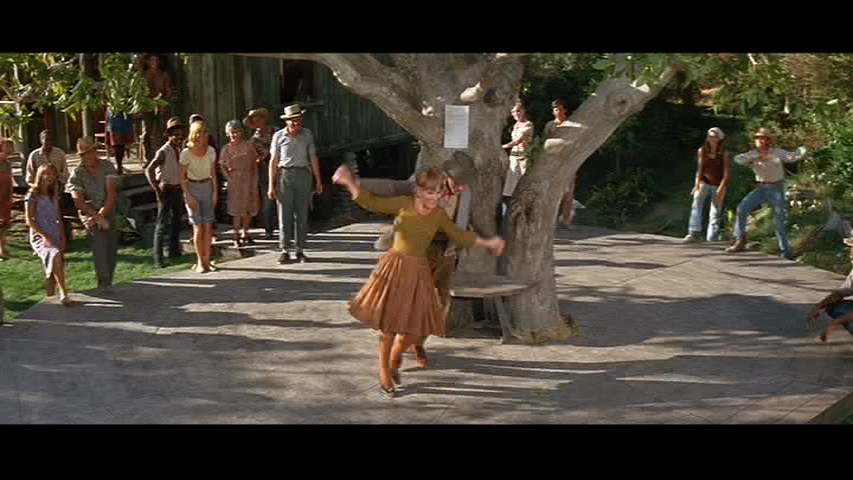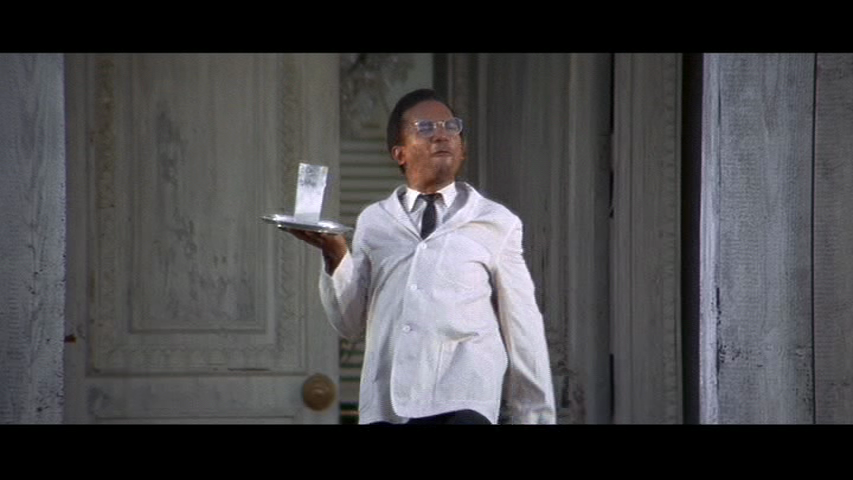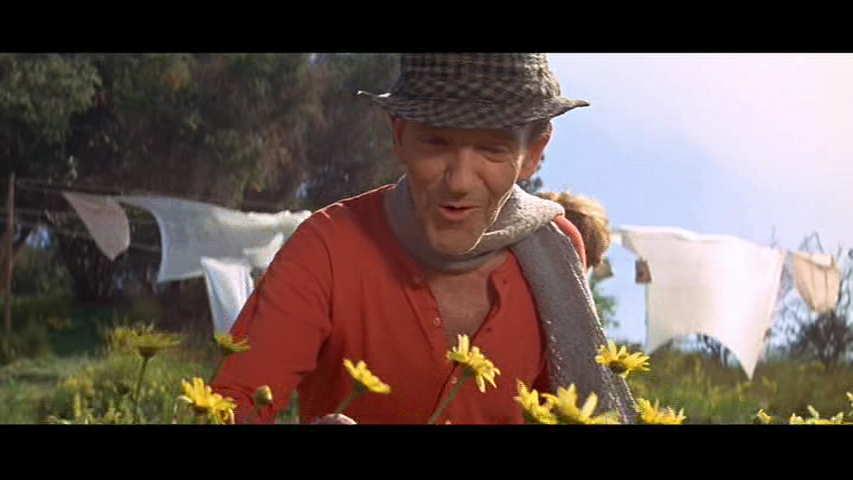|

Synopsis:
An Irishman named Finian (Fred Astaire) and his daughter Sharon (Petula Clark) arrive in the American state of “Miltucky” with a pot of gold which Finian has stolen from a leprechaun (Tommy Steele), intending to bury it in the ground and accelerate its growth; meanwhile, a local dreamer (Don Francks) collaborates with a botanist (Al Freeman, Jr.) to create mentholated tobacco, and a bigoted, greedy senator (Keenan Wynn) is turned into a black man while attempting to buy the land where Finian has planted his pot of gold.
|
|
Genres, Themes, Actors, and Directors:
- Fantasy
- Francis Ford Coppola Films
- Fred Astaire Films
- Keenan Wynn Films
- Leprechauns
- Musicals
- Racism
Review:
Early in his career, Francis Ford Coppola directed this adaptation of a popular Broadway musical (first produced in 1947, and revived in 2009) featuring an unusual mixture of light-hearted fantasy and some fairly trenchant social justice concerns — including racial bigotry, poverty, and political corruption. Indeed, these “hot button” topics apparently prevented the musical from being turned into a film for many years, until the social climate of the ’60s finally allowed for such concerns to be satirized head-on. The end result is a sporadically entertaining but ultimately uneven and over-long musical which tries to incorporate too many narrative strands, and never really reconciles its multiple foci. For instance, there’s a clever subplot in which Clark accidentally wishes Wynn (whose character is based on this real-life politician) could experience life as a black man, and the wish is made manifest — but we don’t see enough of how this impacts Wynn’s world-view; his storyline is treated on merely a surface level, and only occasionally makes an appearance in the remainder of the narrative. Freeman is hilarious in an early key scene as he kowtows to his new employer (Wynn), emulating the type of slow-moving black man Wynn assumes he should be — but this, too, goes no further than a single interaction. Meanwhile, a mute character named Susan the Silent (played by ballerina Barbara Hancock) flits throughout the proceedings, and eventually plays an important role in the denouement, but remains a cypher in every other way.
The performances are a mixed bag as well: it’s always a treat to see Astaire dancing on screen (he’s still sprightly at the age of 69), and he’s nicely cast here as the mischievous Finian; but Steele is ultimately overbearing as Og the Leprechaun (he’ll get on your nerves), and Clark’s primary selling point is her incomparable voice. She seems a bit old for the part, and doesn’t project quite enough charisma for such a central role; compare her performance with that of Janet Munro in Darby O’Gill and the Little People (1959) for an effective study in contrasts. The musical score is a winner (you’re guaranteed to be humming the theme song — “Look to the Rainbow” — for days after the film is over), and Coppola does a nice job bringing at least some of the action and dancing to real-life settings (as during the opening sequences, filmed in Napa Valley). But this one ultimately isn’t successful enough to recommend as must-see to anyone but diehard musical fans.
Redeeming Qualities and Moments:
- Astaire and Clark dancing to “Look to the Rainbow”

- Al Freeman, Jr. as Howard

- Fine Technicolor cinematography

- Burton Lane and E.Y. Harburg’s score
Must See?
No, though it’s recommended for one-time viewing.
Links:
|




One thought on “Finian’s Rainbow (1968)”
Not must-see.
Had not seen this in many years – and I don’t think I had previously seen it in a nice wide-screen print. Since I have now, it’s easier to evaluate it. I agree with most of the points of the assessment given here. But I veer slightly in my overall opinion.
I think the first half of the film works wonderfully. ‘FR’ would not have been an easy film to adapt to screen, mainly since it has a score that leans toward somewhat-precious (as does the somewhat-similar ‘Brigadoon’ – a real dog of a movie musical). What is immediately pleasing is that much care and respect have been bestowed upon the score – to winning effect: the vocals and orchestrations give the songs a surprisingly rich, more satisfying and less sappy sentiment.
[~though it is quite a personal disappointment that my favorite song in the show, ‘Necessity’, did not make it into the film. Why?!!]
Based on what I know of Coppola’s statements re: the making of this film, it was something of a slapdash affair, and the film was being presented at a time when movie musicals were very much falling out of public favor. One can see why: it was becoming necessary for a real visionary to re-invent movie musicals for a new era. Coppola wasn’t accomplishing that with ‘FR’ (Fosse would do that, in a few years’ time, with ‘Cabaret’), but he does manage to bring a freshness of spirit to an old-style musical form.
~at least in the film’s first half. Unfortunately, the latter part is the film’s undoing and a feeling of desperation in all aspects begins to move in. I was genuinely charmed by half of ‘FR’; from there, I felt the film seemed a bit tiresome.
Note: I was in a production of this musical in high school. It was not a favorite musical of mine at the time, but I don’t recall it as being a memorable high school production, either.